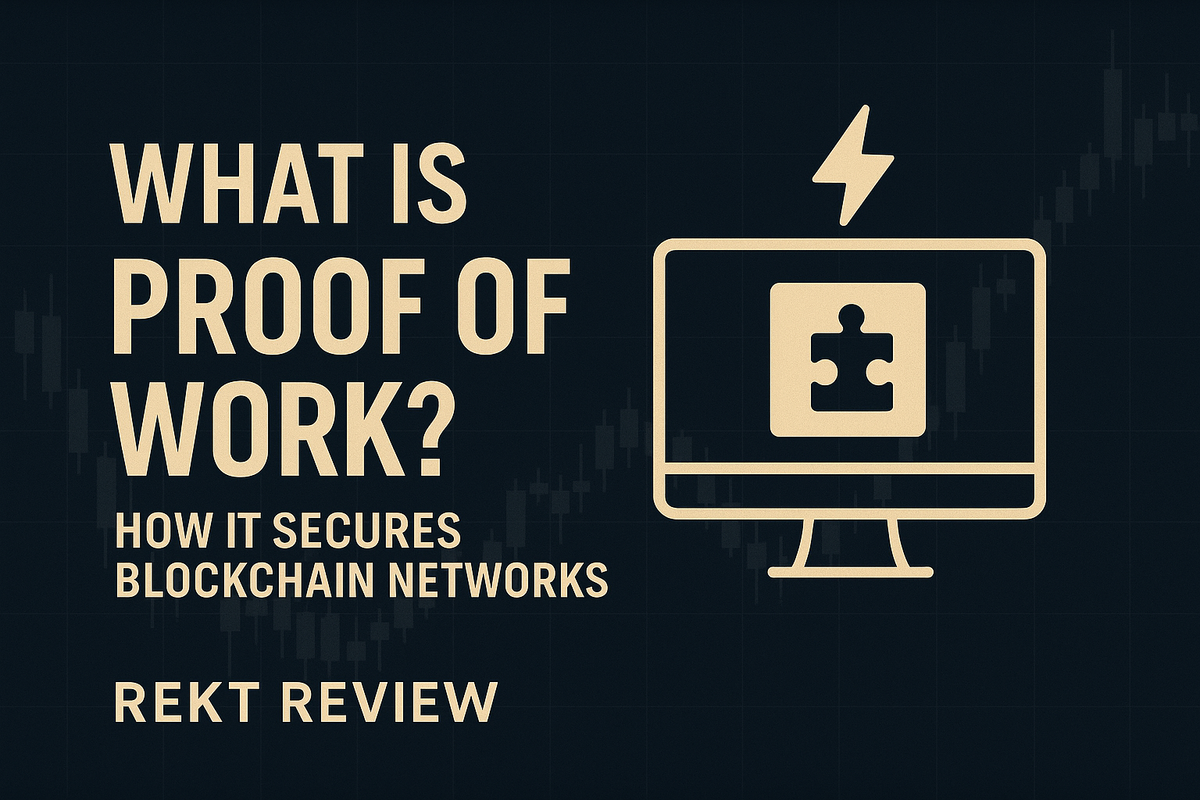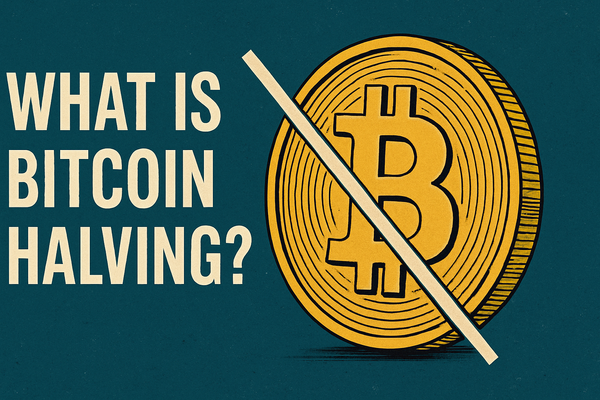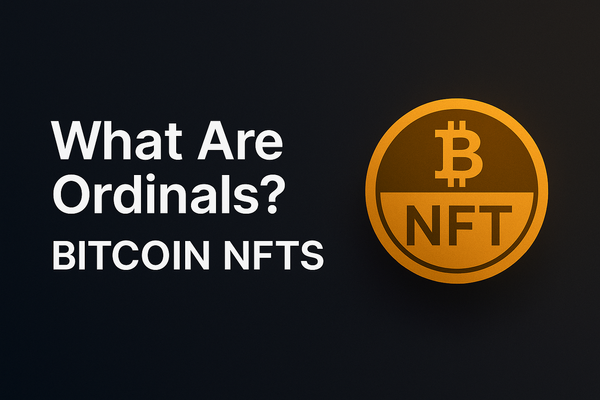What Is Proof of Work (PoW)? How It Secures Blockchain Networks
Proof of Work (PoW) is the engine behind Bitcoin’s security. Discover how it works, its benefits, limitations, and why it remains crucial to blockchain technology.

Proof of Work (PoW) is a consensus mechanism used to validate transactions and secure blockchain networks. It requires participants, called miners, to solve complex mathematical problems to add new blocks to the chain. This process ensures that the network remains decentralized and tamper-resistant. By demanding computational effort, PoW makes it costly and difficult for malicious actors to manipulate transaction records.
Originally developed to combat email spam and denial-of-service attacks, Proof of Work found its most famous application in Bitcoin. Today, it remains a cornerstone of blockchain security, ensuring trust without the need for a central authority. Understanding PoW is essential for grasping how decentralized systems maintain integrity and transparency.
The Origins of Proof of Work
The concept of Proof of Work was first introduced in 1993 by computer scientists Cynthia Dwork and Moni Naor. They proposed it as a way to deter spam emails by requiring a small amount of computational work before sending a message. This work would be easy for legitimate users but costly for mass spammers, creating a natural defense.
Later in 1999, the term "Proof of Work" was formally coined by Markus Jakobsson and Ari Juels. Although the idea stayed theoretical for years, it became a fundamental building block when Satoshi Nakamoto integrated it into Bitcoin. This real-world application proved the system could secure decentralized networks effectively.
How Proof of Work Functions
At its core, Proof of Work requires miners to solve cryptographic puzzles that are difficult to compute but easy to verify. Miners compete to find a solution by repeatedly hashing data until they discover a value that meets specific conditions, usually starting with a set number of zeros. This process demands significant computational power and energy.
Once a miner solves the puzzle, the solution is broadcast to the network for verification. Other participants can quickly confirm whether the solution is valid without replicating the entire computational effort. The first miner to find a valid solution earns the right to add a new block to the blockchain and receives a reward, typically in cryptocurrency.
This system ensures fairness and security by making attacks on the network extremely resource-intensive. Changing historical data would require redoing the Proof of Work for all subsequent blocks, making tampering practically impossible.
Proof of Work in Bitcoin
Bitcoin was the first major implementation of Proof of Work in a decentralized network. In Bitcoin, miners use computing power to solve a mathematical problem based on the SHA-256 hashing algorithm. The goal is to find a hash that falls below a dynamically adjusted target set by the network.
Every 10 minutes, on average, a miner successfully solves the puzzle and adds a new block of transactions to the blockchain. The miner is rewarded with newly minted bitcoins and transaction fees, incentivizing continuous participation. As more miners join or leave the network, Bitcoin automatically adjusts the difficulty of puzzles to maintain the 10-minute block time.
Proof of Work ensures that Bitcoin remains decentralized and resistant to fraud. It would take an enormous amount of computational power — more than half the network's total — for a malicious actor to alter the blockchain.
Advantages of Proof of Work
Proof of Work offers a high level of security for blockchain networks. Because altering past transactions would require an immense amount of computational power, PoW makes it nearly impossible for bad actors to tamper with the blockchain. This ensures the network remains trustworthy and transparent.
Another advantage is decentralization. Anyone with enough computing resources can participate in mining, making the network open and inclusive. Proof of Work also provides a simple and proven method for achieving consensus without needing a central authority or third-party intermediary.
Despite criticisms, PoW remains one of the most battle-tested and reliable mechanisms for securing digital assets. Bitcoin’s continued dominance is a testament to the strength of the Proof of Work model.
Criticisms and Limitations
One of the biggest criticisms of Proof of Work is its massive energy consumption. Mining requires vast amounts of electricity, leading to concerns about its environmental impact. Some estimates suggest that Bitcoin’s energy use rivals that of entire countries.
Another issue is the trend toward mining centralization. As mining has become more competitive, individuals often cannot compete with large mining farms that use specialized hardware. This concentration of power can undermine the decentralized ideals that Proof of Work was designed to uphold.
Additionally, PoW networks can be slower and more expensive to scale compared to newer models like Proof of Stake. These limitations have fueled the search for alternative consensus mechanisms in the blockchain industry.
Proof of Work vs. Proof of Stake
Proof of Work and Proof of Stake are two major methods for securing blockchains, but they operate very differently. In Proof of Work, miners compete by expending computational power, while in Proof of Stake, validators are chosen based on the number of coins they hold and are willing to "stake" as collateral.
Proof of Stake drastically reduces energy consumption because it eliminates the need for intensive computations. It also lowers barriers to entry, allowing more participants to help secure the network without expensive hardware. However, critics argue that PoS can favor wealthier participants, potentially leading to centralization in a different form.
Each system has its strengths and trade-offs, and the choice between PoW and PoS often depends on the specific goals and values of a blockchain project.
Real-World Applications Beyond Cryptocurrency
While Proof of Work is most famous for securing cryptocurrencies like Bitcoin, its principles have broader applications. Early proposals suggested using PoW to combat spam emails by requiring minor computational work before sending messages, making mass spamming costly and impractical.
Beyond email, PoW concepts have been explored in securing voting systems, preventing denial-of-service attacks, and protecting digital assets. These applications leverage the same principle: making undesirable actions computationally expensive to deter abuse. Although cryptocurrencies popularized PoW, its usefulness extends well beyond financial systems.
Proof of Work FAQ
Proof of Work is a system where computers solve complex puzzles to validate transactions and secure a blockchain network.
Proof of Work ensures that transactions are legitimate and protects the network from fraud by requiring significant computational effort.
It makes altering past transaction records extremely costly and difficult, discouraging malicious actors from attempting attacks.
Proof of Work consumes large amounts of energy and can lead to mining centralization, raising concerns about sustainability and fairness.
Yes, other cryptocurrencies like Litecoin and early versions of Ethereum also used Proof of Work to secure their networks.
Conclusion
Proof of Work remains one of the most important innovations in digital security and decentralized systems. By requiring computational effort to validate transactions, it creates trust without the need for central authorities. Despite criticisms around energy use and scalability, PoW has proven its resilience over time.
As blockchain technology evolves, new methods may rise, but Proof of Work’s legacy as the foundation of decentralized finance is undeniable.





